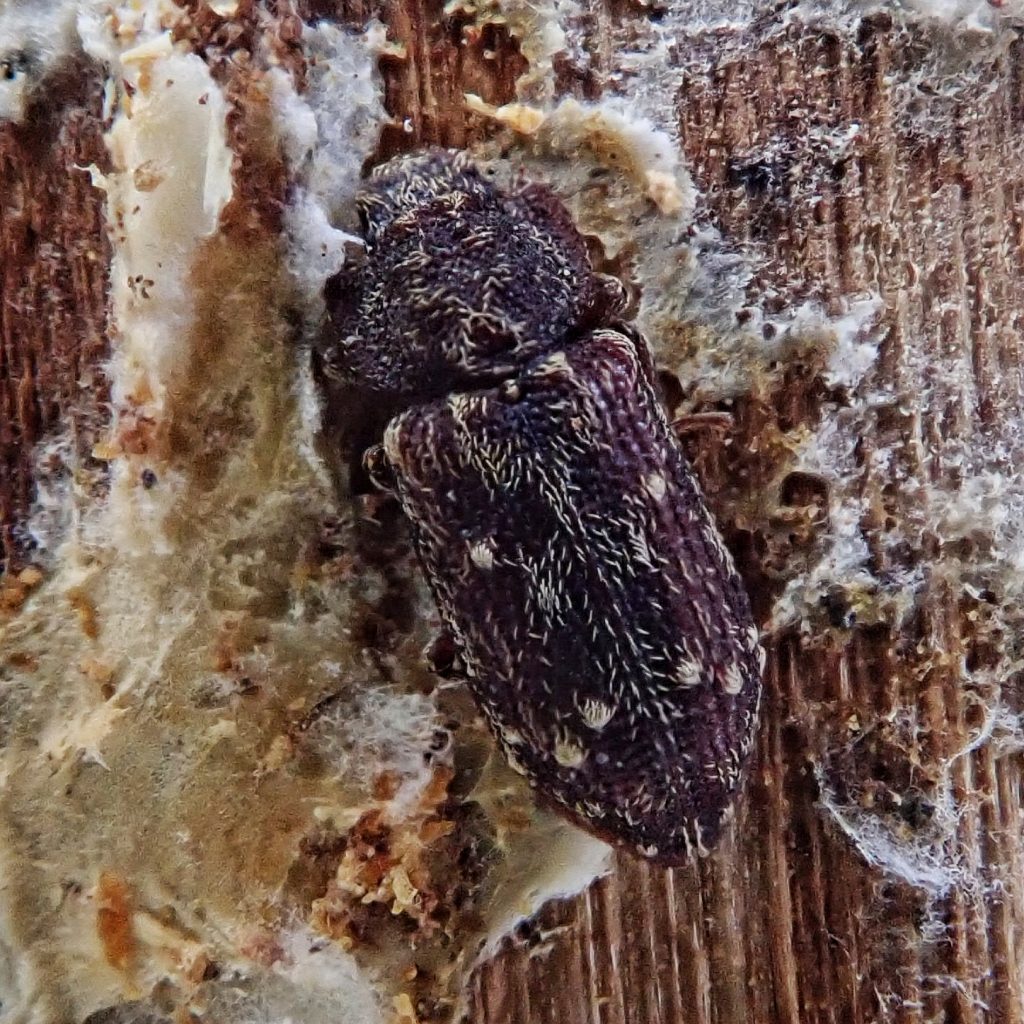
These little ironclad beetles in the family Zopheridae (cylindrical bark beetles) do not have a common name. I found them under the bark of an alder snag where I was looking for myxos, and at first I thought they were fecal pellets of some unknown creature. But fecal pellets seldom have consistent patterning, and a closer look revealed them to be beetles.
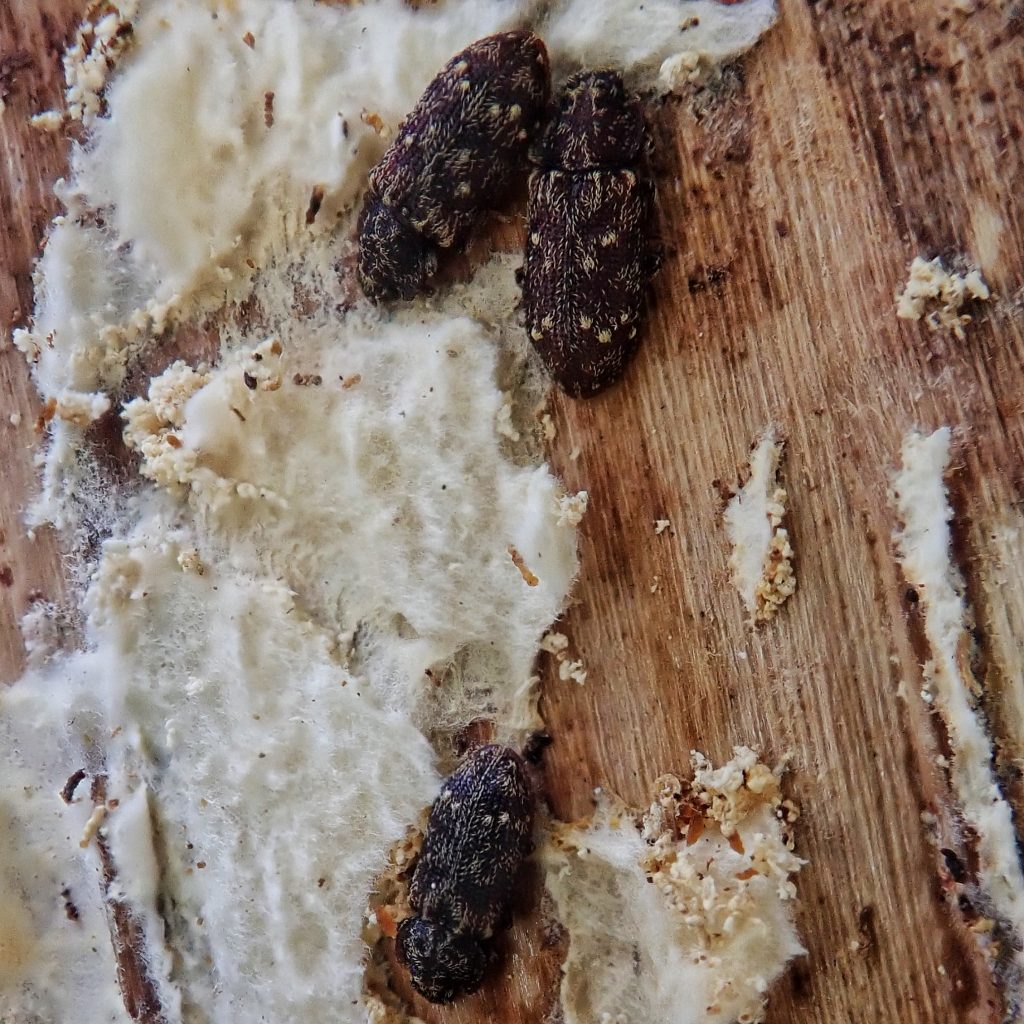
There doesn’t seem to be much known about the life history of these creatures. I have now found them twice this fall, both times under the bark of alder snags, and both times there were at least a dozen beneath a square foot or so of bark with abundant white, mold-like fungus. Since they were not active, even when exposed to sunlight, this leads me to wonder if the adults overwinter in those shelters, or if they are reaching the end of their life, but I can find no information to confirm or deny that.
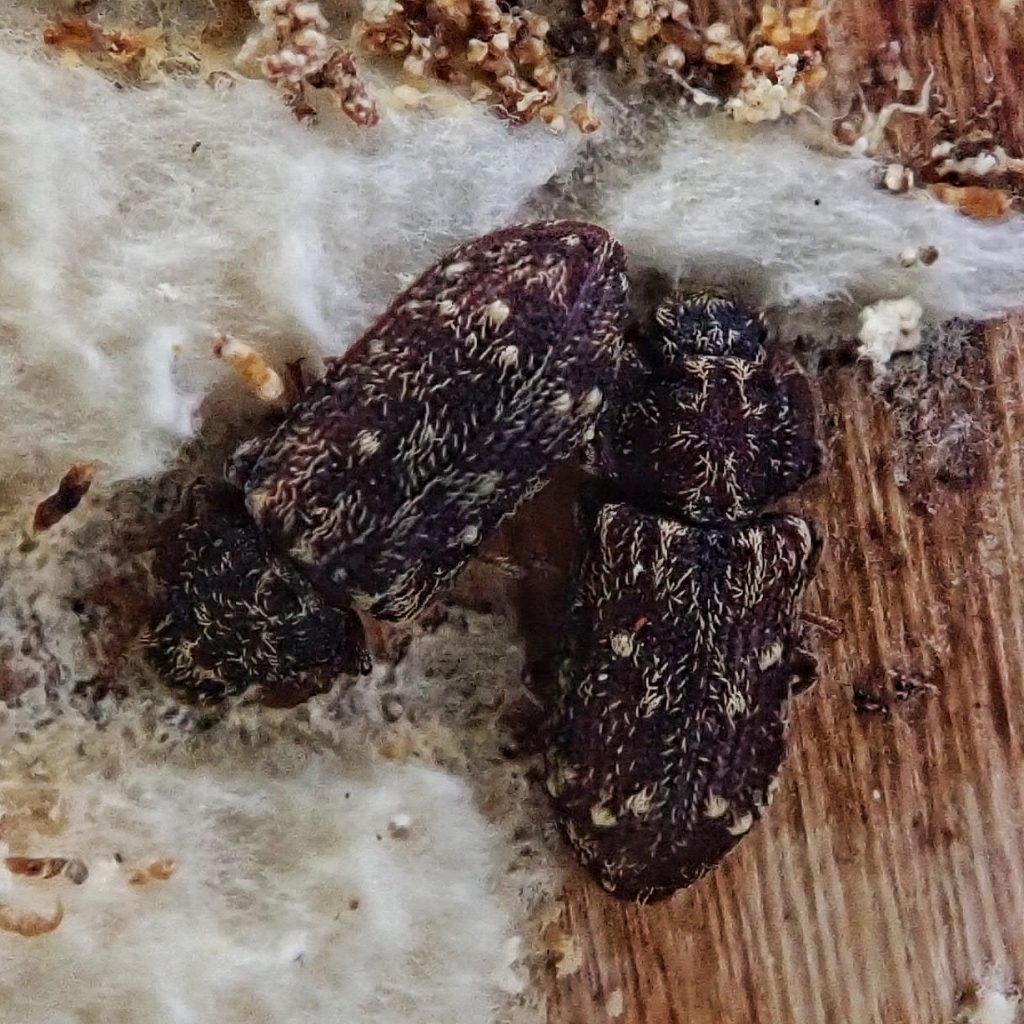
Description-Small (4-5mm long) dark brown to black beetle with sparse but abundant setae, which clump together to form light colored spots on the elytra; antennae are clubbed; pronotum with minutely scalloped margins and front corners projecting forward and coming to a point; elytra and pronotum minutely sculpted.
Similar species– Usechus nucleatus and Usechimorpha barberi lack setae forming light spots, and have large bumps near elytral tips.
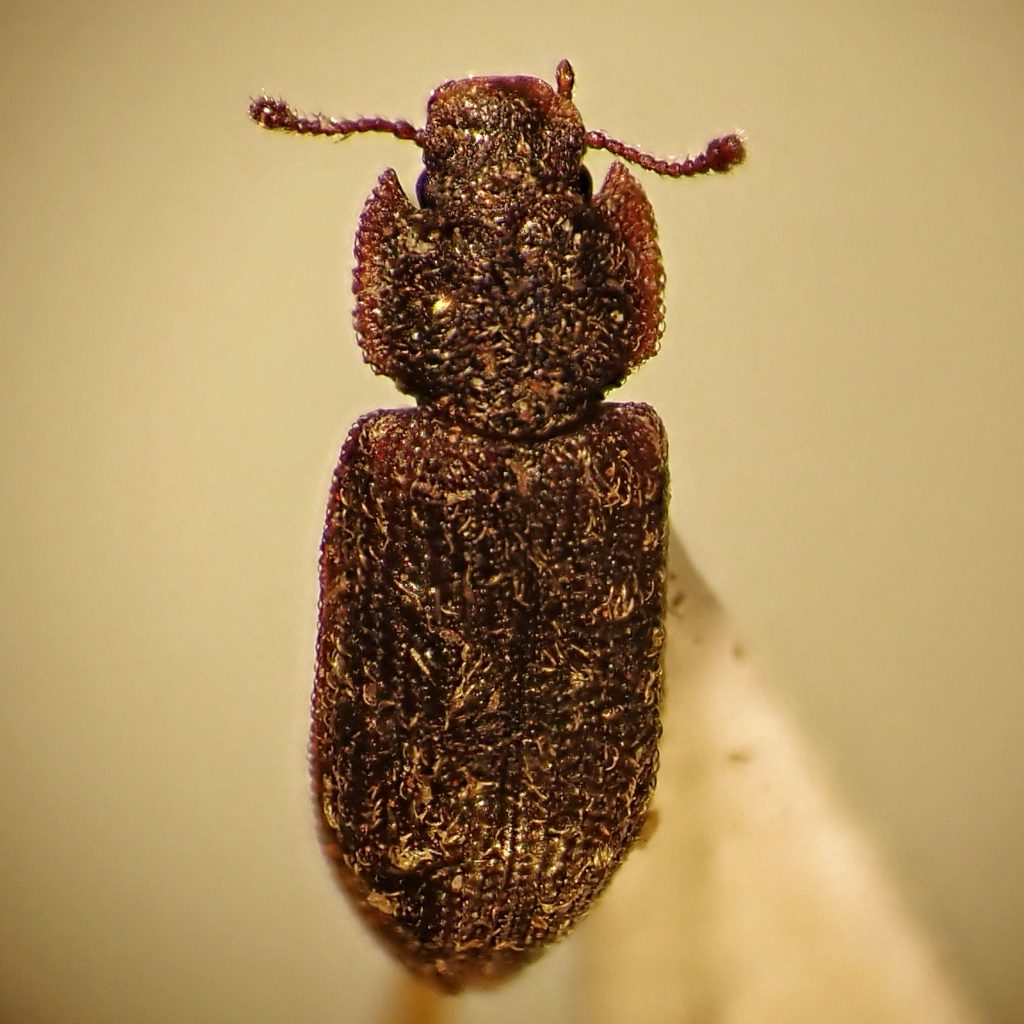
Habitat-Found under the bark of dead and dying maples, alder, hemlock, and Douglas fir.
Range-West of the 100th meridian in North America; region wide in appropriate habitats.
Eats-Adults and larvae eat wood rotting fungi.
Eaten by– Probably consumed by insectivores of all classes.
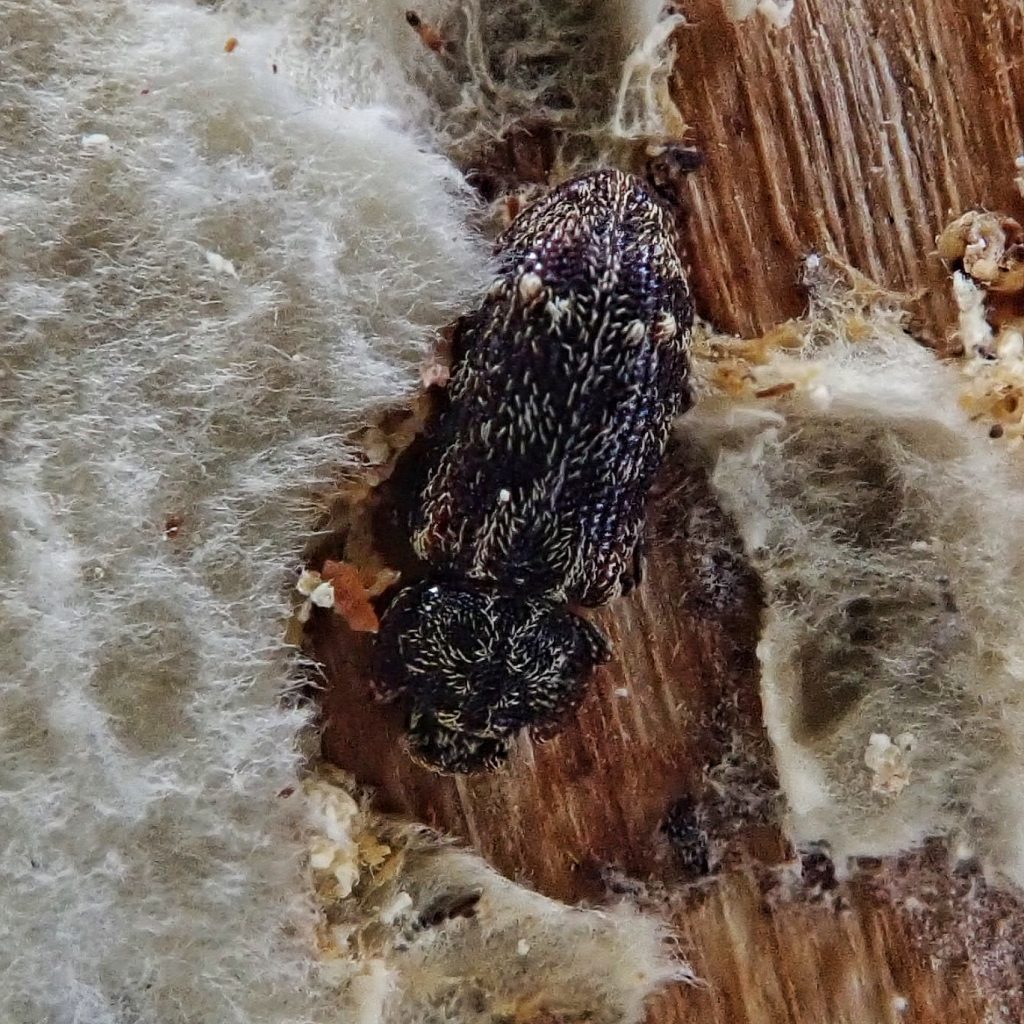
Adults active-Apparently most active from early spring until early fall; adults may overwinter in relative dormancy beneath bark.
Life cycle-seems to be unknown
Etymology of names–Namunaria may be from the Greek word for ‘stream/spring’, but I can find nothing to corroborate that, or explain the reference. The specific epithet pacifica references the fact that this species is only found in states bordering the Pacific Ocean.
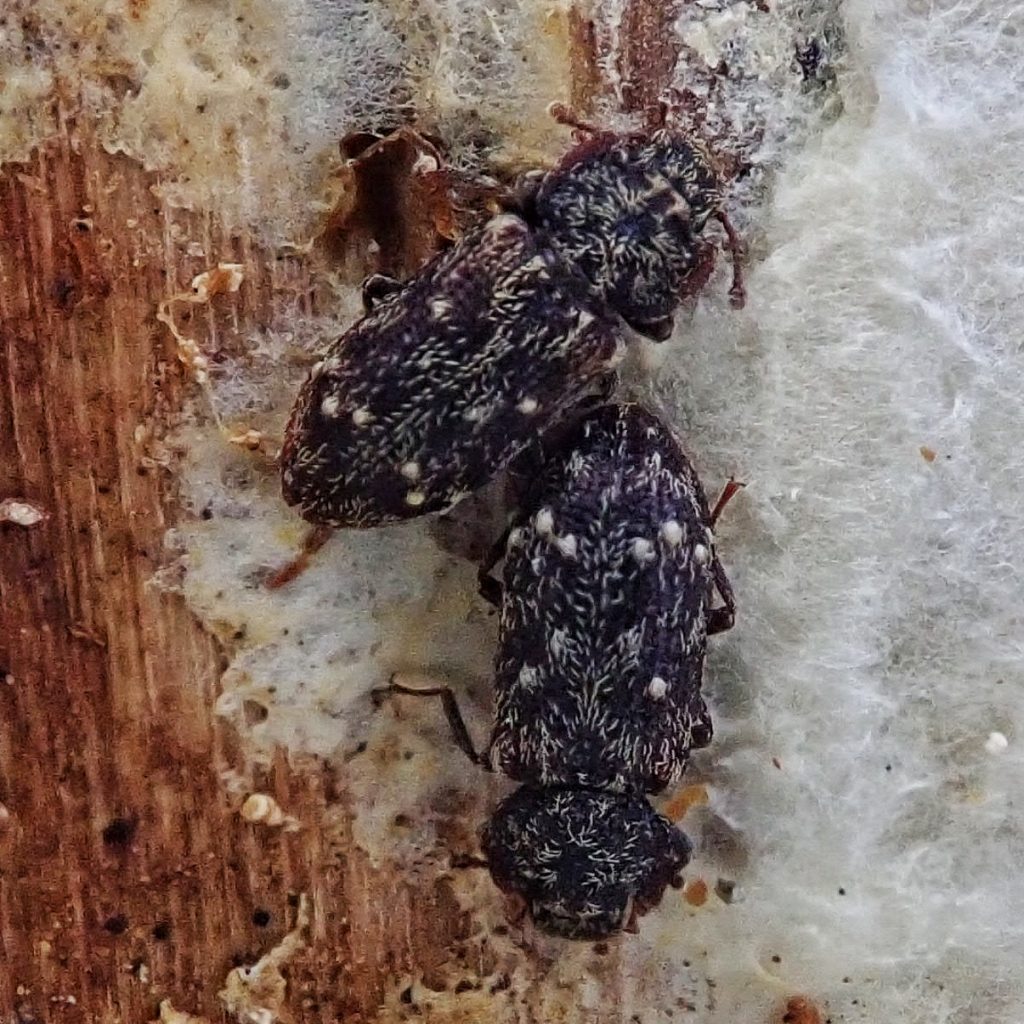
https://bugguide.net/node/view/221933
https://cerambycids.com/ironcladid/IroncladID-Namunaria.html
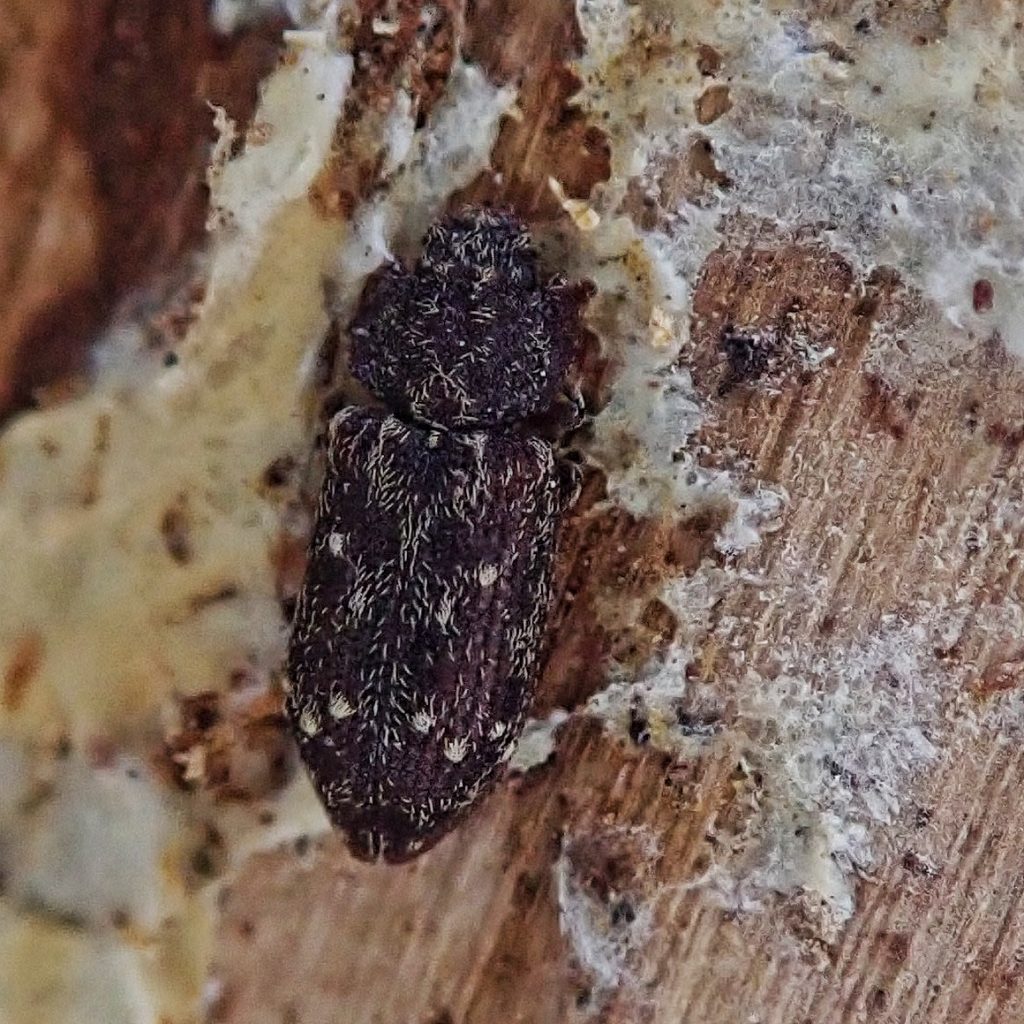
I believe we should give them a common name. Sweater knit beetle.
That would be a good one!